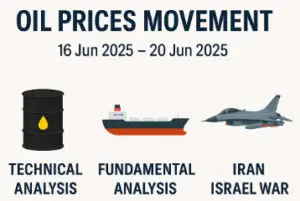How the Iran-Israel War Is Shaping Palantir Technologies (PLTR): A Deep Dive into War Analytics and Strategic AI
When tensions explode into open conflict, defense infrastructure becomes more than just national security—it becomes a critical business sector. In 2025, the Iran-Israel war has cast a long shadow over global politics, energy markets, and military alliances. But among the flurry of updates and headlines, one company stands out in the digital battlefield: Palantir Technologies (PLTR).
Best known for its advanced data analytics and AI platforms used in military operations, Palantir war analytics has moved from behind-the-scenes to center stage. The PLTR conflict impact is not just being felt in Silicon Valley or Wall Street—it’s echoing through military bunkers, war rooms, and diplomatic channels around the globe.
Here’s the latest PLTR stock snapshot as context:
Stock market information for Palantir Technologies Inc (PLTR)
- Palantir Technologies Inc is a equity in the USA market.
- The price is 139.96 USD currently with a change of 1.75 USD (0.01%) from the previous close.
- The latest open price was 139.0 USD and the intraday volume is 58260225.
- The intraday high is 140.27 USD and the intraday low is 137.56 USD.
- The latest trade time is Thursday, June 19, 05:15:00 +0500.
🌍 Geopolitical AI Warfare
Keyword: Palantir war analytics & Keyword: PLTR conflict impact
Palantir’s advanced AI‑powered platforms—Gotham, Foundry, AIP, and its mobile TITAN ground stations—have become instrumental in modern warfare, including the current Iran–Israel conflict. The heightened military tension since June 13, 2025 has shifted attention to firms providing battlefield analytics capabilities (moomoo.com, en.wikipedia.org).
-
Palantir’s systems help the Israeli defense forces integrate satellite feeds, signals intelligence, and drone data to execute precision strikes and real-time coordination .
-
A Reddit user summed up market sentiment, saying:
“Palantir is heavily used by Israel… the use case for AI in warfare… is astounding” (investors.com, moomoo.com).
📈 Stock Surge Amid Conflict
The PLTR share price surged to record highs during June 16–17, 2025 as defense-focused equities rallied amid reduced conflict fears and renewed budget priorities. Specific highlights:
-
June 16: PLTR closed at an all-time high of $141.41, +3% on the day (investopedia.com).
-
Premarket trading saw spikes above $144, reflecting aggressive repositioning in AI‑defense stocks (barrons.com).
-
Analysts like Loop Capital called PLTR a “runaway freight train,” with new price targets near $155 (investopedia.com).
-
Broader market sentiment among investors: Palantir is a top pick during geopolitical shifts (barchart.com).
🛡️ Defense Revenue Boost
-
Palantir’s strategic partnership with Israel’s Ministry of Defense, formalized in January 2024, now yields heightened demand (moomoo.com).
-
Products like TITAN support precise, AI‑guided battlefield operations, increasing use-case momentum amid the Iran–Israel flare-up (moomoo.com).
🔮 Investor Considerations & Risks
-
Valuation stretch:
PLTR trades at ~203x forward earnings, far above S&P 500 average (~22x). That suggests expectations are built into current prices (barrons.com). -
Geopolitical sensitivity:
Price momentum is tied directly to conflict dynamics. A de‑escalation—or extended stalemate—could reverse sentiment sharply. -
Ethical & political backlash:
Palantir faces scrutiny over its role in lethal targeting. Opposition voices and protest actions against its Israel ties could influence contracts and public image (finance.yahoo.com, reddit.com).
The Iran-Israel Conflict: A Flashpoint for Military Tech
The recent escalation between Iran and Israel began with a series of coordinated missile and drone attacks, followed by targeted airstrikes. It’s not just another Middle Eastern skirmish—this time, regional power balances are being tested. The United States, Russia, and even China are all observing closely.
In this scenario, military-grade data processing and decision-making tools are not luxuries—they are lifelines. That’s exactly where Palantir war analytics comes in.
What is Palantir’s Role in the Iran-Israel War?
Palantir’s AI platforms—Gotham, Foundry, and AIP—are heavily used by Western militaries and, significantly, by Israel’s Defense Forces (IDF). In fact, Palantir has had a long-standing defense partnership with the Israeli government.
Here’s what Palantir is believed to be doing during this conflict:
-
Real-time battlefield mapping using satellite and drone feeds.
-
Predictive modeling of enemy movement and resource allocation.
-
Combat decision assistance through its TITAN system, used by commanders in the field.
-
Cross-platform integration, pulling data from radar, reconnaissance, and cyber-intel into a single operational interface.
In simple terms, Palantir war analytics gives commanders what they need most—clarity. In a chaotic war like this, clarity saves lives.
Stock Surge and Market Sentiment
As the conflict escalated, PLTR stock surged past $140 in mid-June 2025, a new all-time high. The rally wasn’t just emotional—it was grounded in investor logic:
-
Increased defense spending by the Israeli government and its allies.
-
Global demand for Palantir-like analytics due to fears of regional war spilling over.
-
Long-term AI adoption as the future of defense technology becomes undeniably tied to predictive data.
Traders, retail investors, and institutional buyers have all started talking about the PLTR conflict impact as a potential game-changer for the company’s long-term trajectory.
War-Time Revenue Opportunities
While Palantir does not publicly disclose every country it works with, defense contracts often spike during international conflict. With the Iran-Israel war:
-
Emergency procurement processes are activated, allowing defense ministries to acquire tech faster.
-
Existing contracts may be scaled up due to sudden war demands.
-
New partnerships with allied countries (e.g., Saudi Arabia, Jordan, and the UAE) may emerge as they look to modernize their military data systems.
Palantir war analytics may soon be part of multiple military operations—not just in Israel, but in every country watching this war and preparing for its own defense.
Ethical and Political Pressures
But this isn’t just a stock market success story. The PLTR conflict impact has also ignited debates.
Palantir has been under scrutiny before—for working with ICE in the U.S. and for surveillance-related projects. Now, being seen as a direct enabler of wartime targeting raises concerns among human rights groups.
Activists argue:
-
Is AI making it easier to justify war?
-
Who is accountable if AI miscalculates and civilians are harmed?
-
Should private companies profit from war intelligence?
Palantir hasn’t responded publicly to these concerns about the Iran-Israel war, but their silence may be a calculated move during a volatile time.
What This Means for the Future
As the war unfolds, and perhaps intensifies, Palantir war analytics will likely become even more essential. Here’s what the future might look like:
-
More AI deployment on the frontlines, with systems like TITAN being standard in every military unit.
-
Faster decision loops—where data comes in, is processed, and acted upon in seconds.
-
AI-powered diplomacy, where governments use models to predict enemy behavior, not just respond.
The PLTR conflict impact is already rewriting how the world thinks about war. This isn’t about guns and tanks anymore—it’s about algorithms, simulations, and predictive warfare.
Final Thoughts: Opportunity or Overexposure?
Palantir is riding a powerful wave. But waves crash too.
Yes, there is undeniable demand for what Palantir war analytics provides. Yes, the PLTR conflict impact has turned investor attention into actual returns. But will this war-driven momentum last? Will Palantir evolve beyond war, or is its future now tied to the fires of conflict?
One thing is certain—Palantir has proven its relevance, not just in financial markets, but in the survival strategies of modern nations.



